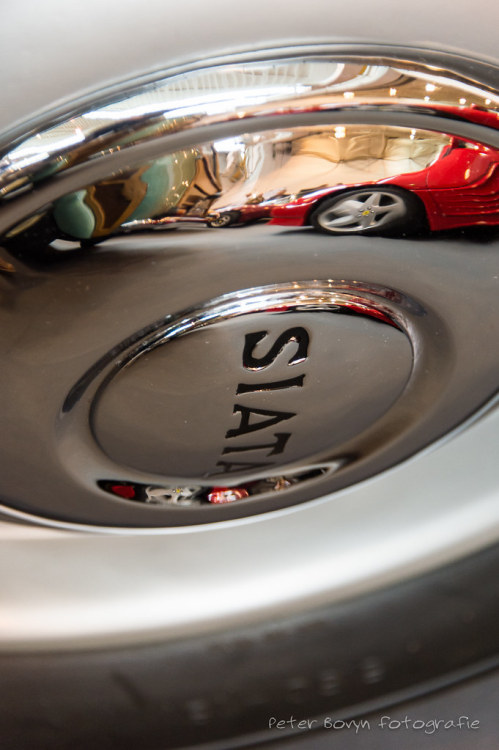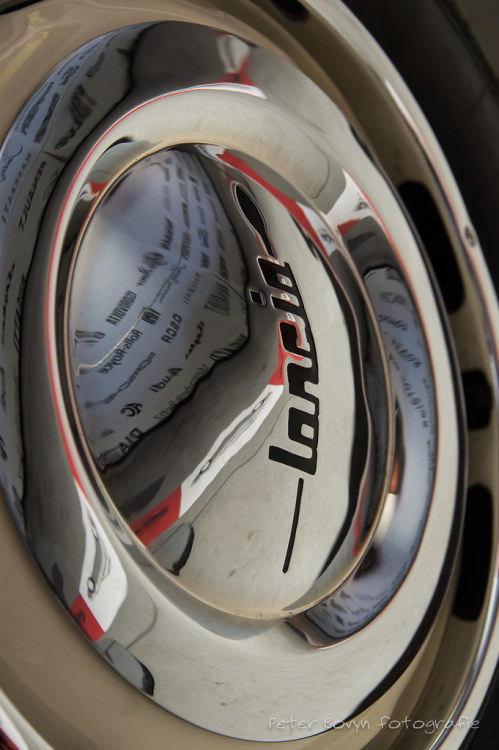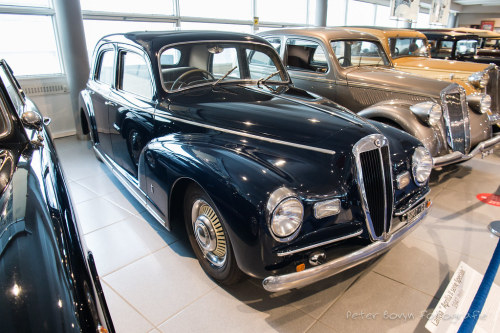
Lancia Beta Monte Carlo - 1980 by Perico001 1.995 cc
4 Cylinder
120 bhp
Vmax : 195 km/h
Autoworld
www.autoworld.be
Brussels - Belgium
October 2020 https://flic.kr/p/2jYhvm7
from Tumblr https://somar78.tumblr.com/post/633208764274769920

Lancia Beta Monte Carlo - 1980 by Perico001 1.995 cc
4 Cylinder
120 bhp
Vmax : 195 km/h
Autoworld
www.autoworld.be
Brussels - Belgium
October 2020 https://flic.kr/p/2jYhvm7

Siata Daina Gran Sport Roadster - 1951 by Perico001 Coachwork by Stabillimenti Farina
1.400 cc
Techno Classica 2017
Essen
Deutschland - Germany
April 2017 https://flic.kr/p/StNNBs

Lancia Flavia 1800 Sport Coupé - 1963 by Perico001 Coachwork by Zagato
For this project Ercole Spada was given a free hand and the result could undoubtedly be called exceptional. A mere 101 models of the Flavia sport were built with a 1.500 cc engine (90 bhp). Of the 1.800 cc (105 bhp) version 539 saw the light of day, including 32 models with Kugelfischer injection.
In the Spotlight : Carrozzeria Zagato 100 Years
14/09/2019 - 01/12/2019
Autoworld
www.autoworld.be
Brussels - Belgium
October 2019 https://flic.kr/p/2hGFSoX

Lancia Flaminia Super Sport Coupé Zagato - 1966 by Perico001 Der Flaminia, benannt nach der historischen Römerstrasse von Rom an die Adria, baute Lancia als Automobil der Oberklasse von 1957 bis 1970 in knapp 13.000 Exemplaren. Er wurde 1957 als Berlina in Genf vorgestellt. Der Flaminia wurde in mehreren Versionen gebaut, Zagato steuerte zwischen 1959 un d 1967 den Flaminia Sport in drei Versionen bei. Die Supersport-Version fertigte Zagato in den Jahren 1964-1967 als letztes Modell der Flaminia-Sport-Serie in 150 Exemplaren. Insgesamt wurden 593 Flaminia Sport und Super Sport verkauft.
2.775 cc
V6
152 PS
Vmax : 210 km/h
150 ex.
Expo: Zagato Swiss
Pantheon Basel
Forum für Oldtimer
Hofacker 72
Basel
Swiss - Schweiz
March 2017
https://flic.kr/p/TF7Y3S

Fiat 508 Balilla Coppa d'Oro Spyder - 1933 by Perico001 Les Grandes Marques du Monde au Grand Palais
Bonhams
Parijs - Paris
Frankrijk - France
February 2019
Estimated : € 110.000 - 160.000
Sold for € 110.400
Based on the highly successful 508 Balilla saloon, the 508 Balilla Sport competition version was inspired by an original design by Carrozzeria Ghia. FIAT purchased the rights, manufacturing two versions: the Coppa d'Oro (Gold Cup) and lightweight Mille Miglia, named after successes gained in these demanding long distance events. Despite its age, the 508 Balilla was still winning races in the immediate post-war years, adding to a formidable reputation built on numerous victories in classic events in the pre-WW2 era, including the Mille Miglia, Monte Carlo Rally, Targa Florio, Spa Francorchamps 24-Hour, Ulster TT, and Le Mans.
This rare 508 Balilla Sport ‘Coppa d'Oro’ Series 2 was known in the UK in the early 1970s and is believed to have been imported into the UK post-war. The original chassis and engine numbers (as shown on the chassis plate) align with a 1933 production date, while the current engine probably dates from 1935. '021030’ formerly formed part of the collection belonging to L Scott Bailey, founding Editor and Publisher of Automobile Quarterly. The car was restored from the ground upwards in the late 1970s/early 1980s by Wilkinson & Sharp of Philadelphia, PA at a cost of $50,000, with the advice and help of both Augusto Constantino and Antonio Amadeli of the FIAT Museum Centro Storico, and of Dr Veniero Molari. An album of restoration photographs and correspondence is available for inspection together with L Scott Bailey’s full account of the rebuild.
Upon purchase from the FIAT Museum Curator, and before restoration, this car had been loaned to Pininfarina, assisting in the launch of the FIAT Dino ('FIAT’s first sportscar; FIAT’s newest sportscar.’) and after completion in 1984 guested at the Meadowbrook, Los Angeles Museum of Contemporary Arts Automobile and Culture Exhibit. It has also been invited to the Mille Miglia. After some 20 years in the Bailey Collection, the FIAT was offered for sale at Bonhams’ Goodwood Festival of Speed auction in June 2004 (Lot 791) where it was purchased by the current vendor. Since then the car has benefited from maintenance carried out on the engine, brakes, and wheel hubs, the latter being renewed recently.
A substantial quantity of related literature is included in the sale including a copy of '508 Balilla’ (Editor, Giorgio Nada) depicting this actual car (pages 52/53). It is also pictured in accompanying copies of 'Linea FIAT’ and 'La FIAT Mille Miglia’, the latter showing the car prior to restoration. Various other books, an owner’s manual (in Italian), and a copy of Automobile Quarterly (Vol. 5 No. 4) are included in the sale.
https://flic.kr/p/2g2nx8N

Lancia Flaminia 2.5 Berlina - 1960 by Perico001 The Flaminia, presented at the Turin Show in 1956 and put on sale as of 1957, was Lancia’s great flagship, the heir of the Aurelia. It was designed by Professor Fessia. It had a 60′ V6 Lancia engine (2.500 cc) derived from the one used previously in the Aurelia (the first engine in the world in this configuration and patented by Lancia) but this was later replaced with a more powerful 2.800 cc.
Sold at extremely high prices for the time and therefore with a rather low number of vehicles produced, it was still a top symbol of Lancia production in the post-war period and represented a flagship for that segment which is now defined as high quality construction and large, luxury saloons. There is room for six people to sit comfortably in the large driver and passenger compartment.
Worth noting are the two small fins on the back which, although influenced by the American style, were re-interpreted more elegantly by Pininfarina who took charge of the aesthetics. Due to its stateliness and aristocratic line (4.85 m long and 1.75 m wide), this vehicle became the car of statesmen and industrialists during the economic boom.
2.458 cc
V6
102 bhp @ 4.600 rpm
Vmax : 180 km/h
12.633 ex.
Museo Nicolis
Villafranca di Verona
Italy - Italia
February 2019 https://flic.kr/p/2hSCdKC

Lancia Aprilia Speciale Series 2 - 1947 by Perico001 Coachwork by Pinin Farina
Both the first and second Aprilia series were produced with different wheelbase chassis in order to be fitted with different types of bodies or be sold as rolling chassis for the independent bodybuilders. All the most important Italian bodybuilders (Bertone, Touring, Vignale, Pinin Farina to name a few) created beautiful bodies for the Aprilia, which sometimes looked like a small Astura.
In the 1930s, the showy and luxurious American style had influenced all the Italian and European bodybuilders, who after the war came back to a more linear elegance represented by the “pontoon fender” bodies, which integrated the fenders in the car line eliminating the deep modelling that had marked the previous style. The car on show in the museum was designed by Pinin Farina on a Type 439 long chassis. From this creation you can notice the evolution of the style with the headlights becoming a part of the front end and the disappearing side footboard. The natural evolution of this style would later lead to the creation of the Aurelia.
The Aprilia was a beloved and appreciated successful car, its production was stopped in 1949.
1.485 cc
V4
49 bhp @ 4.300 rpm
Vmax : 126 km/h
12.932 ex. (Series 2)
Museo Nicolis
Villafranca di Verona
Italy - Italia
February 2019 https://flic.kr/p/2hTDyXt